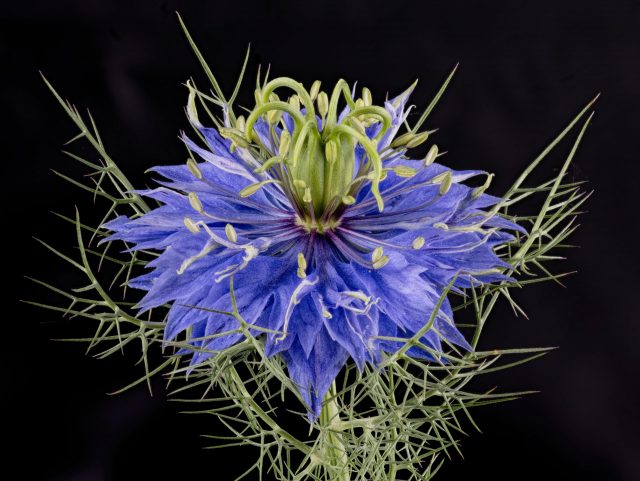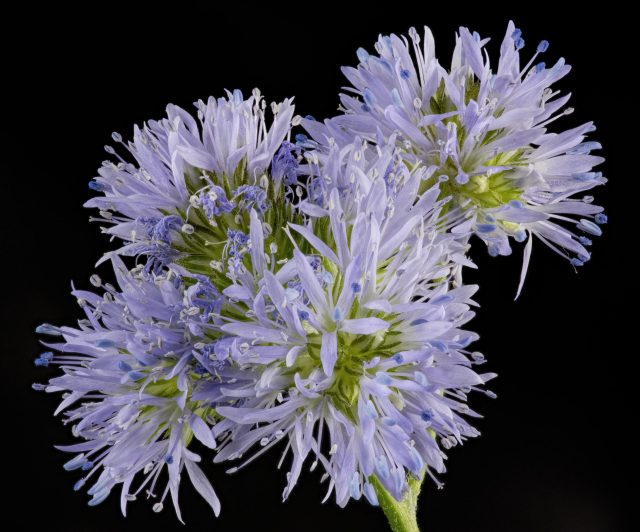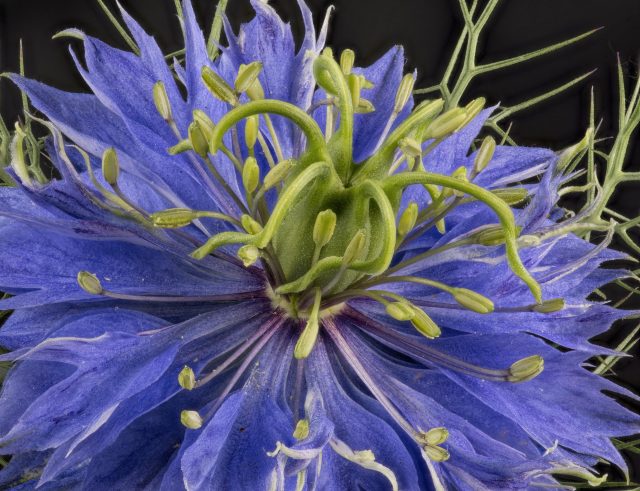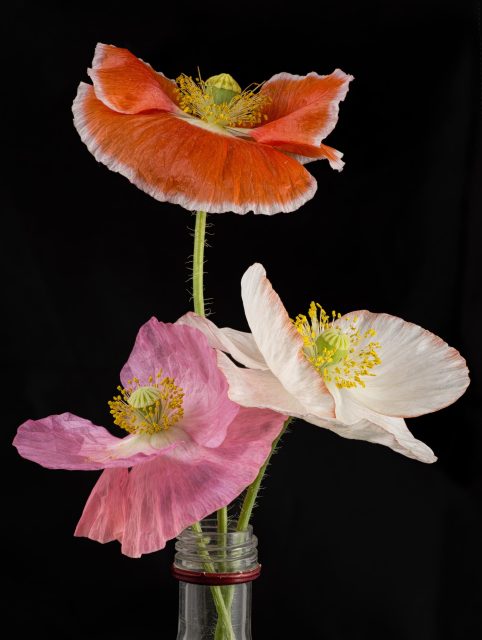
The last of the hardy annuals have finally bloomed — disappointingly, I’m afraid. The Nigella damascena flowers are pleasingly complicated and alien-looking, but nearly all of them are either white or blue. Blues are always welcome, but the package promised purples and reds as well. At least a third of them are single, and Nigella is one instance where double flowers are preferable. It’s probably time for the seed producers to re-select their stock.

Gilia capitata has small clusters of washed-out blue flowers atop tall, thin plants. The inflorescence above is about two inches across; the individual clusters are less than an inch in diameter. The package claims that it will bloom into October. We’ll see. Possibly shearing back the plants after the initial flowering will induce greater bushiness. G. capitata is a widespread plant with a number of subspecies. I suspect I have the the most common and least interesting form. If I grow it again, I’ll purchase my seeds from a different source.
The Shirley poppies, Papaver rhoeas, are pretty much done. They might have lasted longer were it not for the large mammals that obliviously walked through them or drove into them. I might be able to get another week’s worth of color from the smaller planting out of traffic in front of the house.
For those keeping score, here’s a recap. Most of these were sown at the end of February.
Phacelia campanularia was first to bloom, with flowers of intense blue starting near the end of April on plants six inches to a foot tall.
Gilia tricolor followed shortly after with flowers in shades from violet to white on plants about a foot tall. These allegedly smell like chocolate, but I never detected any fragrance.
Eschscholzia californica was next, in the middle of May. (These were sown around the middle of March.)
Centaurea cyanus followed in the last week of the month.
P. rhoeas began blooming at the end of May.
Each of these bloomed for roughly a month, the Phacelia a little longer, the poppies probably a week less. I expect that I’ll get at least another two weeks of bloom from the Centaurea, Nigella and G. capitata. After that, I’ll be relying on the Mexican and south-western annuals — Zinnia, Cosmos, Tithonia, Thymophylla — for color.



Wonderful